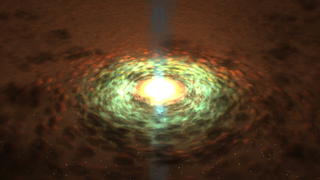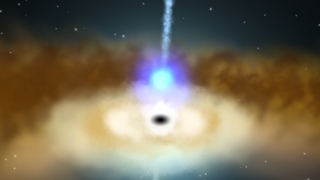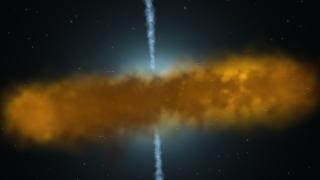The Cloudy Cores of Active Galaxies
Using data from NASA's Rossi X-ray Timing Explorer (RXTE) satellite, an international team has uncovered a dozen instances where X-ray signals from active galaxies dimmed as a result of a cloud of gas moving across our line of sight. The new study triples the number of cloud events previously identified in the 16-year archive.
The study is the first statistical survey of the environments around supermassive black holes and is the longest-running AGN-monitoring study yet performed in X-rays. Scientists determined various properties of the occulting clouds, which vary in size and shape but average 4 billion miles (6.5 billion km) across – greater than Pluto's distance from the sun — and twice the mass of Earth. They orbit a few light-weeks to a few light-years from the black hole.
Related
For More Information
Credits
Scott Wiessinger (USRA): Animator
Scott Wiessinger (USRA): Video Editor
Scott Wiessinger (USRA): Producer
Francis Reddy (Syneren Technologies): Writer
NASA's Goddard Space Flight Center. However, individual items should be credited as indicated above.
http://mnras.oxfordjournals.org/lookup/doi/10.1093/mnras/stt2492
Short URL to share this page:
https://svs.gsfc.nasa.gov/11482
Mission:
RXTE
This item is part of these series:
Astrophysics Animations
Narrated Movies
Keywords:
SVS >> Galaxy
SVS >> HDTV
SVS >> X-ray
SVS >> Black Hole
SVS >> Astrophysics
SVS >> Space
SVS >> Blazar
SVS >> Active Galactic Nucleus
SVS >> RXTE
NASA Science >> Universe














